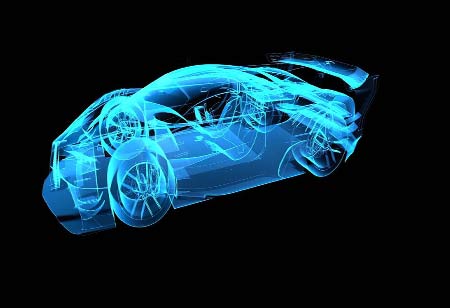Thank you for Subscribing to Auto Business Outlook Weekly Brief
Understanding the Automotive Aftermarket: Driving Innovation and Customer Satisfaction
The automotive industry is an ever-evolving ecosystem, with new car models hitting the roads regularly, enticing consumers with advanced features, safety technologies, and improved performance.

By
Auto Business Outlook | Wednesday, July 26, 2023
Stay ahead of the industry with exclusive feature stories on the top companies, expert insights and the latest news delivered straight to your inbox. Subscribe today.

The automotive aftermarket is a thriving ecosystem that complements the automotive industry, enhancing vehicle performance, aesthetics, and customer satisfaction.
FREMONT, CA: The automotive industry is an ever-evolving ecosystem, with new car models hitting the roads regularly, enticing consumers with advanced features, safety technologies, and improved performance. However, while new car sales dominate headlines, it is essential not to overlook the significant impact and opportunities of the automotive aftermarket.
The automotive aftermarket refers to the secondary market of the automotive industry, where products and services are offered for vehicles after their original sale. This vast and dynamic sector plays a crucial role in enhancing vehicle performance, aesthetics, and personalization, thereby enriching the overall driving experience for consumers worldwide.
1. The Scope and Diversity of the Automotive Aftermarket
The automotive aftermarket is a multi-billion-dollar industry encompassing many products and services. It includes, but is not limited to:
a) Parts Replacement: The backbone of the aftermarket, this segment includes parts like brake pads, filters, batteries, exhaust systems, and engine components, among others. Consumers turn to the aftermarket for cost-effective, high-quality replacements that enhance their vehicle's performance.
b) Accessories and Customization: Enthusiasts and everyday drivers seek personalization options to add style and functionality to their vehicles. This segment caters to diverse consumer tastes, from exterior modifications like spoilers and alloy wheels to interior upgrades such as infotainment systems and upholstery.
c) Performance Enhancements: Automotive enthusiasts who crave more power, improved handling, or better fuel efficiency find their solution in the aftermarket. Performance parts like turbochargers, suspension upgrades, and engine tuning modules push the boundaries of stock performance.
d) Car Care Products: A well-maintained vehicle is the pride of any car owner. The aftermarket provides many car care products, including polishes, waxes, cleaners, and detailing accessories, to keep vehicles pristine.
2. Key Players and Business Models
The automotive aftermarket accommodates various players, from small independent garages to large multinational corporations. Key stakeholders include:
a) Independent Repair Shops: Local garages and workshops are the lifeblood of the aftermarket. They offer a personal touch, quick service, and often cost-effective solutions for vehicle maintenance and repairs.
b) Parts Manufacturers and Distributors: Companies producing aftermarket parts and components and those responsible for distributing them to retailers play a crucial role in ensuring a steady supply chain.
c) E-Commerce Platforms: Digital marketplaces have revolutionized the aftermarket. Online platforms enable consumers to easily browse and purchase parts and accessories, promoting convenience and accessibility.
d) Specialty Retailers: Stores specializing in automotive aftermarket products provide consumers with expert advice and a vast selection of high-quality items, catering to various customer preferences.
3. Embracing Innovation and Technology
The automotive aftermarket has recently embraced technological advancements to provide cutting-edge products and services. Several trends are driving innovation within the sector:
a) Digital Transformation: E-commerce platforms have become an integral part of the aftermarket, providing consumers easy access to products, price comparisons, and customer reviews.
b) Data-Driven Solutions: Connected vehicles generate a vast amount of data. The aftermarket can offer personalized solutions, predictive maintenance recommendations, and improved customer experiences by harnessing this data.
c) Electric and Hybrid Vehicles: As the automotive industry shifts towards sustainable mobility, the aftermarket is adapting to cater to the needs of electric and hybrid vehicle owners, with offerings like charging infrastructure, EV-specific parts, and maintenance services.
d) 3D Printing: Additive manufacturing revolutionizes parts production, allowing faster prototyping and customization. This technology enables rare or hard-to-find parts to be recreated on demand.
4. The Road Ahead: Challenges and Opportunities
While the automotive aftermarket holds immense potential, it also faces some challenges. Some concerns are counterfeit parts, inconsistent quality, and the need to stay up-to-date with ever-advancing vehicle technologies.
However, the future remains promising, with several opportunities on the horizon. Leveraging data and technology can help aftermarket businesses provide personalized customer experiences and optimize inventory management. Additionally, as the vehicle parc grows, so does the demand for aftermarket products and services, presenting a vast market for growth.
Conclusion
The automotive aftermarket is a thriving ecosystem that complements the automotive industry, enhancing vehicle performance, aesthetics, and customer satisfaction. Embracing technological innovations and catering to the diverse needs of consumers will undoubtedly pave the way for a prosperous future in this dynamic sector. As the industry continues to evolve, stakeholders must collaborate, innovate, and adapt to meet the challenges and opportunities that lie ahead.






